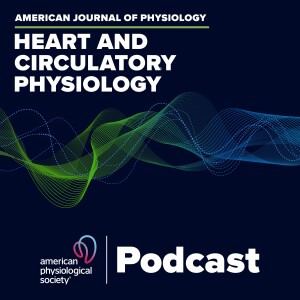
What are collateral arterioles, and how can the number of such collaterals in the brain affect recovery from stroke? Listen as Guest Editor Akos Koller (New York Medical College) interviews first author Jennifer Lucitti (University of North Carolina at Chapel Hill) and content expert Mordecai Blaustein (University of Maryland Medical School) about this fascinating new study, which investigated the formation of collaterals both pre- and postnatal, as well as the role of chloride intracellular channel 4 (CLIC4) protein in collateral formation. Lucitti and colleagues found that there is a specific time when collaterals formed during embryogenesis, which can be very important later in life if larger arteries are blocked. At the molecular level, what exciting relationship did the authors find between vascular endothelial growth factor-A (VEGF-A) and CLIC 4 during collaterogenesis? Is prevention of collateral pruning and enhancement of collateral stabilization later in life a promising therapeutic target for stroke? Listen now.
Jennifer L. Lucitti, Natalie J. Tarte, James E. Faber Chloride intracellular channel 4 is required for maturation of the cerebral collateral circulation Am J Physiol Heart Circ Physiol, published October 1, 2015, DOI: 10.1152/ajpheart.00451.2015.
More Episodes
 2013-11-08
2013-11-08
 250
250
 2013-10-11
2013-10-11
 269
269
 2013-10-03
2013-10-03
 237
237
 2013-09-05
2013-09-05
 600
600
 2013-08-27
2013-08-27
 361
361
 2013-07-16
2013-07-16
 346
346
 2013-06-25
2013-06-25
 458
458
 2013-05-31
2013-05-31
 340
340
 2013-05-15
2013-05-15
 409
409
 2013-05-07
2013-05-07
 430
430
 2013-05-07
2013-05-07
 359
359
 2013-05-06
2013-05-06
 315
315
 2013-05-02
2013-05-02
 327
327
 2013-04-26
2013-04-26
 301
301
 2013-04-25
2013-04-25
 265
265
Create your
podcast in
minutes
- Full-featured podcast site
- Unlimited storage and bandwidth
- Comprehensive podcast stats
- Distribute to Apple Podcasts, Spotify, and more
- Make money with your podcast
It is Free
- Privacy Policy
- Cookie Policy
- Terms of Use
- Consent Preferences
- Copyright © 2015-2024 Podbean.com





